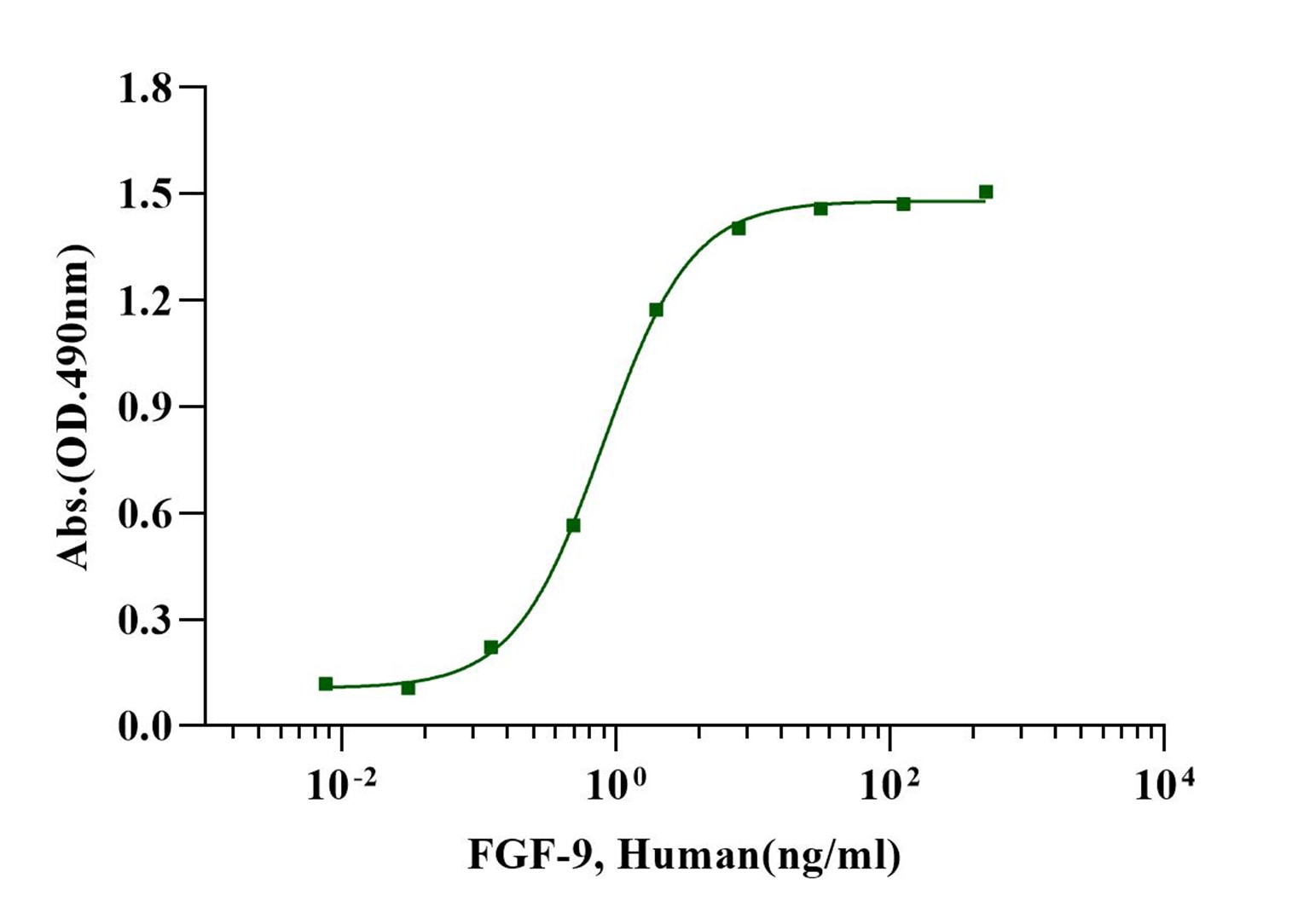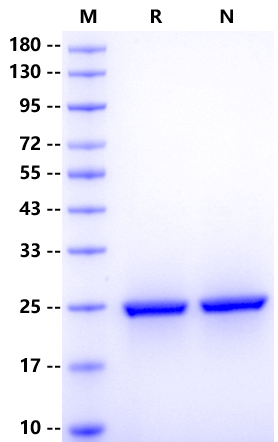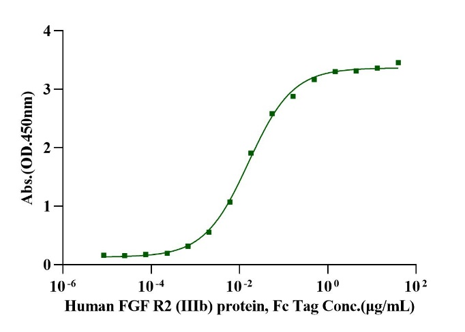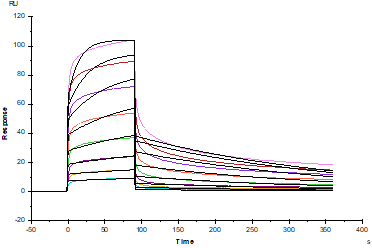Met1-Ser208
25kDa
20mM Tris, 500mM NaCl, pH8.0
Reconstitute at 0.1-1 mg/ml according to the size in ultrapure water after rapid centrifugation.
· 12 months from date of receipt, lyophilized powder stored at -20 to -80℃.
· 3 months, -20 to -80℃ under sterile conditions after reconstitution.
· 1 week, 2 to 8℃ under sterile conditions after reconstitution.
· Please avoid repeated freeze-thaw cycles.
1、Schmahl J. et al. (2004) Fgf9 induces proliferation and nuclear localization of FGFR2 in Sertoli precursors during male sex determination. Development. 131(15): 3627-36.
2、Garcès A. et al. (2000) FGF9: a motoneuron survival factor expressed by medial thoracic and sacral motoneurons. J Neurosci Res. 60(1): 1-9.
FGF9(fibroblast growth factor 9, FGF9) is one of the fibroblast growth factor (FGF) family members. It is widely distributed in various tissues of human body and involved in bone development, angiogenesis, embryonic development, damage repair, cell apoptosis, nerve regeneration, tumor growth and other physiological and pathological processes, and can effectively promote mitosis and cell growth. Current evidence suggests that FGF9 may play a prominent role not only in bone development and growth of cartilage into bone formation and generation, but also has a significant impact on aspects of ovarian cancer, nerve regeneration, gonadal differentiation, there remains much to be discovered and investigated on the functions and mechanisms of FGF18.

Measured in a cell proliferation assay using Balb/c 3T3 mouse fibroblast cells, the EC50 for this effect is less than 1ng/ml.


Immobilized FGF-9 Protein, Human (Cat. No. UA040087) at 5.0μg/mL (100μL/well) can bind Human FGF R2 (IIIb) protein, Fc Tag with EC50 of 13.99-18.37ng/mL.

CM5 Chip captured FGF-9, Human(Cat. No. UA040087), can bind FGF-R2 (IIIb) His Tag, Human(Cat. No. UA010145) with an affinity constant of 0.45μM as determined in SPR assay.

CM5 Chip captured FGF-9, Human(Cat. No. UA040087), can bind FGF-R4/CD334 His Tag, Human (Cat. No. UA020009) with an affinity constant of 0.28μM as determined in SPR assay.